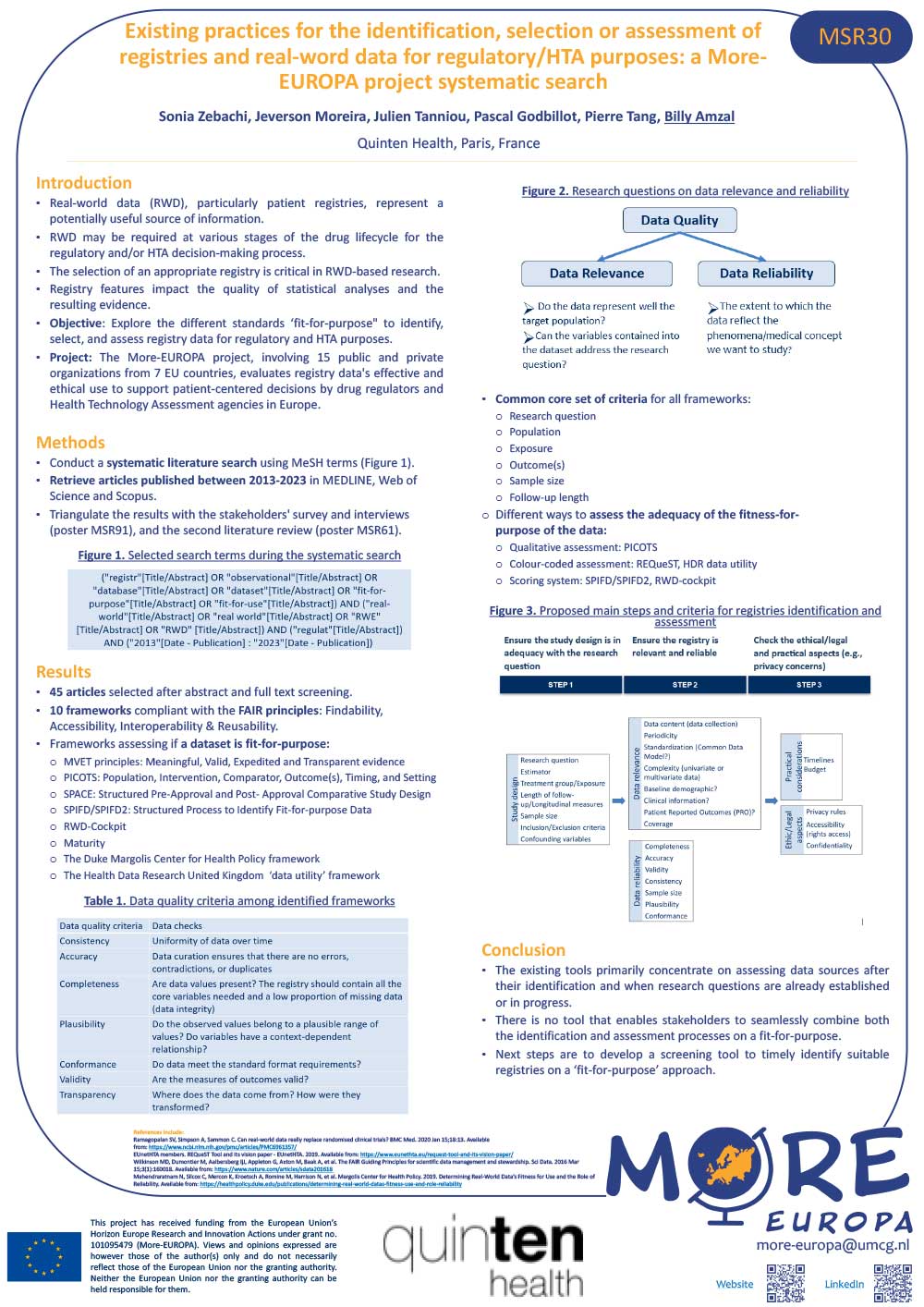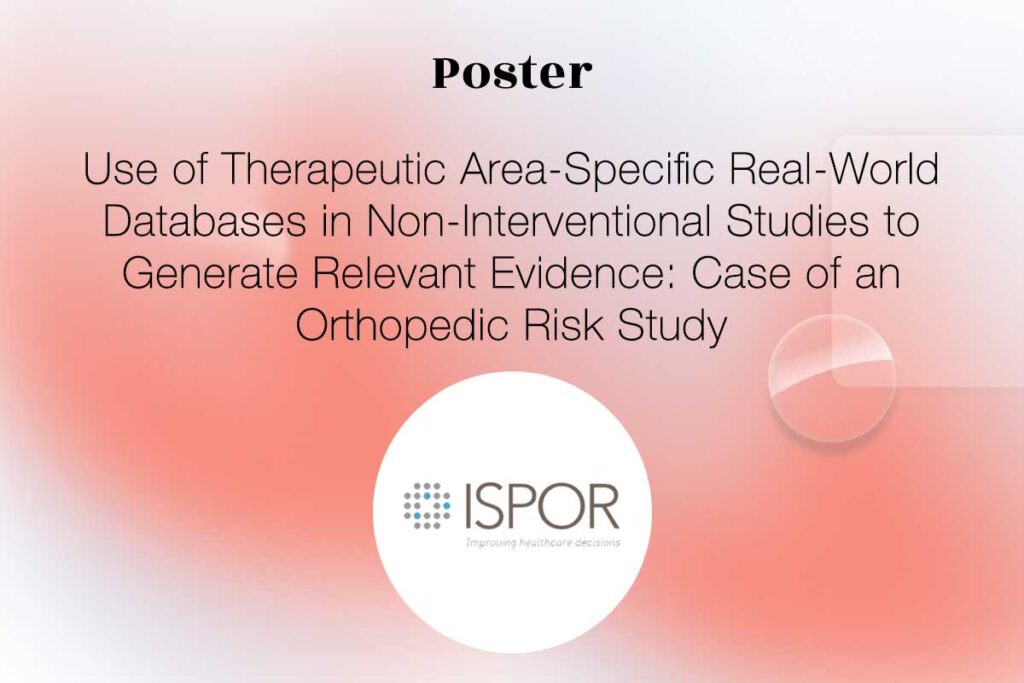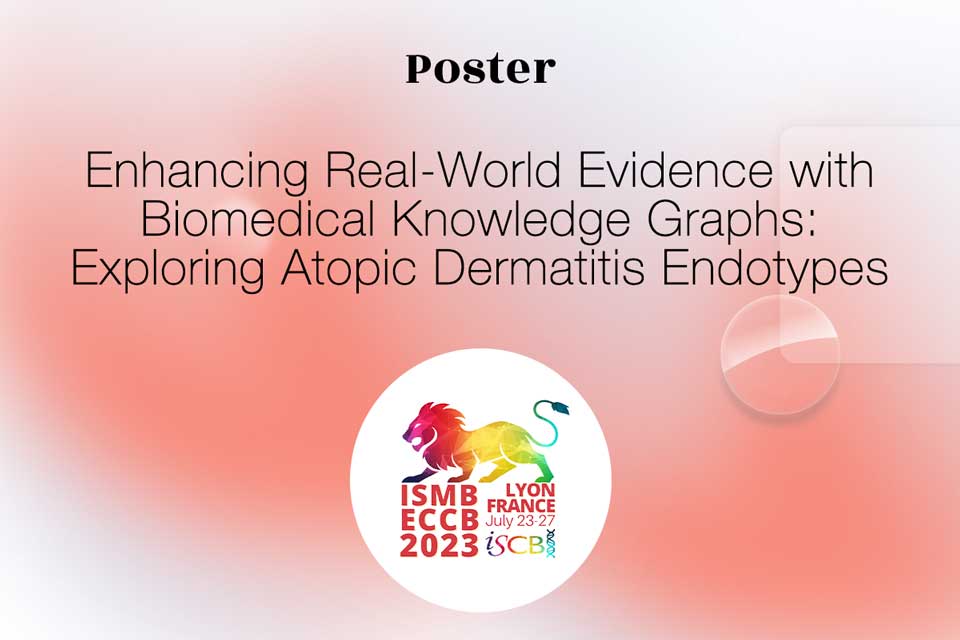Authors: S. Zebachi, J. Moreira, J. Tanniou, P. Godbillot, P. Tang, B. Amzal
Date: 13 November 2023
DOI: https://www.ispor.org/heor-resources/presentations-database/presentation/euro2023-3784/133370
CONFERENCE/VALUE IN HEALTH INFO:
2023-11, ISPOR Europe 2023, Copenhagen, Denmark
Value in Health, Volume 26, Issue 11, S2 (December 2023)
Abstract
Objectives
Real-world data (RWD), particularly patient registries, represent a potential useful source of information and may be required at various stages of the drug lifecycle. Different questions may be asked throughout the regulatory and/or HTA decision-making process, including concerns related drug safety, reimbursement, cost-effectiveness… The selection of an appropriate registry plays a critical role in RWD-based research, as registry features directly impact the quality of statistical analyses and the resulting evidence. In light of this, the More-EUROPA project, a five-year public-private program involving 7 EU countries, aims to identify and propose practices for a more efficient use of RWD in the development, registration, and assessment of medicinal products in Europe. Specifically, one main objective is to develop a screening tool to timely identify suitable registries on a ‘fit-for-purpose’ approach.
Methods
A literature review was conducted to investigate the current practices regarding the identification, selection, and assessment of registries and RWD sources on a fit-for-purpose setting, mainly from a regulatory/HTA decision-making perspective. Articles published between 2013 and 2023 were identified through MEDLINE, Web of Science and Scopus databases, employing free-text search terms related to registries and RWD in the context of fit-for-use approaches.
Results
A total of 819 articles were initially identified, out of which 765 were excluded during primary and secondary screening, resulting in a final set of 54 articles for analysis. Findings indicate a growing presence of guidance provided by regulatory agencies and HTA bodies. However, apart from a few specific repositories allowing the identification (e.g., ENCePP) or framework tools for assessment of registries quality (e.g., REQueST), no comprehensive tool integrating the dimensions of identification, selection, and assessment has been identified in the literature.
Conclusion
These results underline the need to create an integrative tool allowing to standardize the identification and quality assessment of registries.









